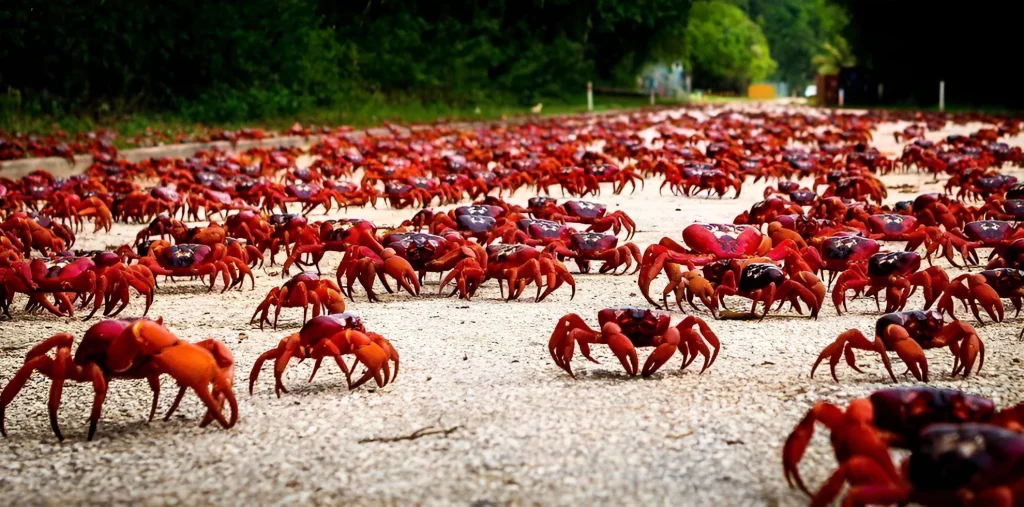A unique natural phenomenon can be observed in the Cuban national park of Ciénaga de Zapata, located 170 km southeast of Havana.

Millions of red crabs leave the tropical forests and head towards the Caribbean Sea to lay their eggs there. The crab migration season typically occurs at the end of April, after the first spring rains, and lasts for about ten days.
With the rising and setting of the sun, the roads in Ciénaga de Zapata become completely covered by red “pedestrians” crossing the highway at unauthorized locations.
Unfortunately, thousands of crabs perish under the wheels of passing cars. Avoiding the arthropods is impossible: they blanket the road in a continuous “moving carpet.” Due to the sharp smell of crushed crab-like creatures, it can be challenging to breathe at times.

Tourists from around the world gather to witness this incredible spectacle. Crabs are harmless; upon seeing a human, they immediately scuttle away. However, the sharp pincers of the crustaceans often puncture the tires of many vehicles.
It is noteworthy that the crabs are considered inedible: residents of surrounding villages claim that they are poisonous. After depositing their eggs for a few days, the crabs return to their burrows in the forests. A couple of months later, the crab offspring that emerged in the sea will also migrate to join them.
Similar crab migrations occur not only in Cuba. They can also be observed, for example, on Christmas Island in Australia, where roads are even closed and temporary bridges are built for the crabs.